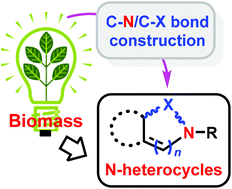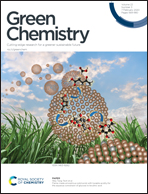Cycloamination strategies for renewable N-heterocycles
Abstract
Biomass resources have infinite possibilities for introducing nitrogen, sulfur, or phosphorus heteroatoms into their structures by virtue of controllable carbon–heteroatom bond formation. In this review, cycloamination approaches for thermal (catalyst-free) and catalytic transformation of biomass feedstocks into N-heterocyclic molecules including mechanistic pathways are analyzed. Bottom-up (small molecule substrates) and top-down (large molecule substrates) are considered. Sustainable routes for synthesis of five-membered (pyrroles, pyrrolidones, pyrazoles, imidazoles), six-membered (pyridines, pyrazines), fused (indoles, benzimidazoles), and other relevant azaheterocycles are critically assessed. Production of biomass-derived six-, seven-, and eight-membered as well as fused N-heterocyclic compounds with present approaches have relatively low selectivities. Attention to methods for forming analogous sulfur or phosphorus heteroatom compounds from biomass resources using either bottom-up or top-down strategies appear to have been greatly overlooked. Synthetic auxiliaries (heating modes, nitrogen sources) that enhance reaction efficiency and tunability of N-heterocyclic ring size/type are considered and plausible reaction mechanisms for pivotal pathways are developed.



 Please wait while we load your content...
Please wait while we load your content...